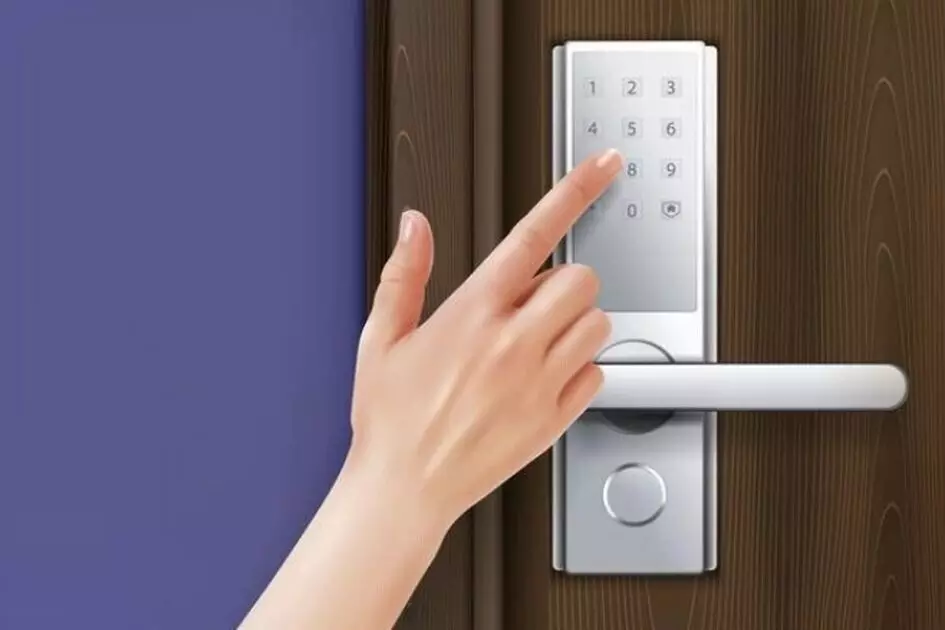An Analysis of Smart Locking: Changing Dynamics and the Science Employed
image for illustrative purpose

Smart locks are a new technology in home security. It provides convenience, high security, and ease of use in home security management. The author takes a look at smart lock features and how they work. From wireless communication technology to encryption, all have made normal door locks the most advanced security technologies.
How Smart Locks Work
The essence of any smart lock is an element that can either supplement or replace conventional key-based locking systems. Smart locks are created to use a set of digital signals and wireless protocols to communicate with the mobile device or the remote control. The advantage of this technology is based on the fact that there are no physical keys and that everything operates with authorization on an electronic level.
There are two components in a smart lock: the locking mechanism and the control unit is two key structures of the apparatus. This is usually like old-fashioned locking methods that comprise deadbolt and latch locks to secure the door.
Concept of Protocols of Wireless Communications
Smart locks are devices that work through wireless protocols. The well-known versions include Bluetooth, Wi-Fi, and Z Wave.
- Bluetooth: Most popular for short-range connection, a Bluetooth smart lock for door offers functionality. Users can unlock doors within a specific range using a smartphone. Bluetooth is economical in terms of power and is commonly used in battery-driven gadgets.
- Wi-Fi: If a connection is to be made out of the office, Wi-Fi is the most popular protocol known today. WiFi-enabled smart locks offer the convenience of being operated remotely, from the comfort of an individual’s house, office, or any other place with internet access. Most of these systems include applications on mobile devices that make it possible to monitor and control the stated systems in real-time.
- Z-Wave: Z-Wave is low-power and long-range wireless networking that is used across smart home products. Smart locks that support Z-Wave allow home integration to more complex smart home systems, whereby it can conveniently interact with other smart systems including security cameras and alarms.
Encryption and Security
One of the most important discussions involves the security of the user’s data. Since these devices are used to monitor and give control over entry into one’s home, then they should not be hacked. Authentication is the protection technology that is applied on the interaction belt between the smart lock and the command equipment.
Smart locks employ high-security encryption protocols like AES with a complexion of complex coding mechanisms. AES encryption in essence makes it impossible to break the data even in case it is intercepted by the external wireless communication system. Two-factor authentication and biometrics also increase security because extra measures cannot be taken by a person who is not the owner.
Power and Energy Efficiency
Smart locks are mostly battery-operated, while some can be wired into the building's electrical system. Smart battery-operated locks usually employ AA or rechargeable lithium-ion batteries and smart locks provide security through battery-powered mechanisms. Smart locks are power efficient, as wireless communication results in energy consumption.
Smart Lock Feature Highlights & Advantages
Smart locks typically provide various solutions that can meet any security requirement. Some of the most common features include:
- Remote access: The convenience of having a product that one can operate remotely – by a smartphone application or a separate remote control.
- Access logs: All smart locks have access logs that show who entered and when.
- Voice control: Smart locks have compatibility features with voice-based virtual personal assistants like Amazon Alexa and Google Assistant. It can be voice-operated by voice commands.
By integrating these features, smart lock improves convenience and security for the users to give a modern solution to the door locking system.
The Future of Smart Locks
In essence, the future of smart locks is said to be infused with the future of smart home systems. In the future, with growth in Artificial Intelligence and Machine Learning, the smart lock will be able to monitor and understand the behavior and automatically change settings according to the environment.
The use of AI could also result in the design of prophylactic security. For instance, smart locks can study motion around a door and likely recognize potential break-ins before the very attempt is made. However, experience shows that biometric technologies such as fingerprint and facial recognition could become accurate and thus more secure.
Conclusion
The principles of smart locks are based on their ability to Wi-Fi or Bluetooth interface, information encryption, and sophisticated control algorithms. These make smart locks a favorite for modern-day homes and offices since they provide higher security & convenience. Bluetooth and Wi-Fi communication protocols as well as possibilities such as the one related to remote control and the feature that provides an outlook of the access logs. Smart locks are an exciting emerging technology in smart homes and as the technology advances further into the future, smarter locks and smarter homes are on the horizon.


